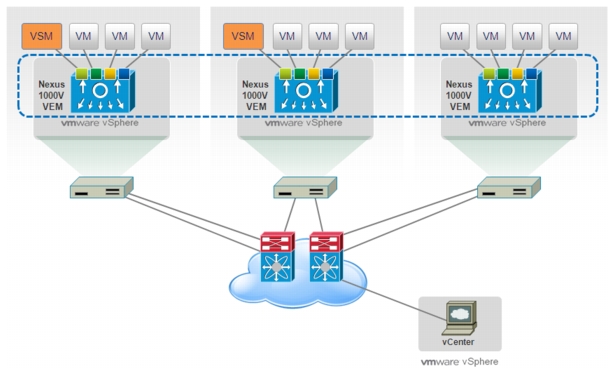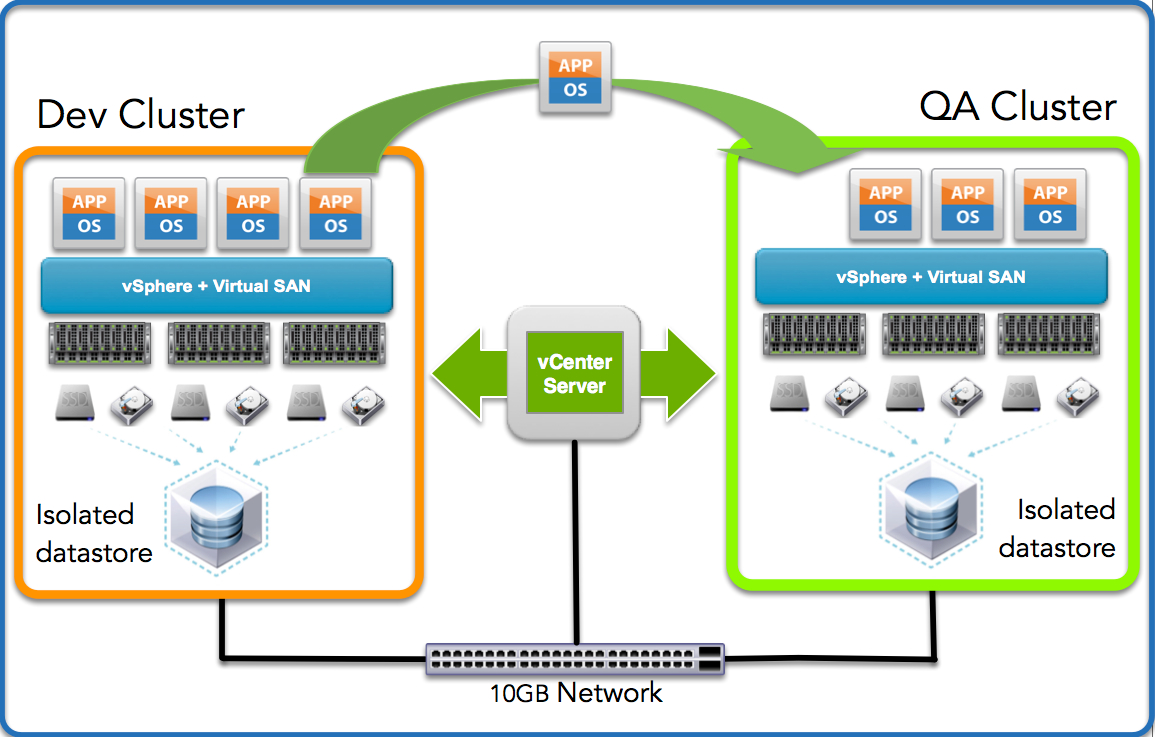VMware vSphere 6.x Datacenter Design
เป็นหลักสูตรที่เน้นการออกแบบระบบ Virtualization อย่าง VMware vSphere 6.5 Data Center ตั้งแต่เริ่มต้นที่กระบวนการออกแบบ กระบวนการค้นพบ การคำนวณ ทรัพยากรที่ต้องใช้สำหรับ Logical Storage การประมวลผล รวมทั้งออกแบบระบบเครือข่าย และ Mapping ไปเป็นความต้องการทางตรรกะ
หลักสูตรนี้ ครอบคลุมไปถึง vSphere Management Design, vSphere Storage Design, vSphere Network Design, vSphere Compute Design, vSphere Physical Design, Virtual Machine Design, vSphere Security Design, การจัดทำเอกสารการออกแบบ เหมาะสำหรับท่านที่กำลังติดตั้งและบริหารจัดการระบบ vSphere Virtualization รวมทั้งต้องการวางแผนขยายระบบที่มีความซับซ้อนมากขึ้น ยิ่งไปกว่านั้นเหมาะสำหรับท่านที่มีระบบ Cloud เป็นขององค์กรอยู่แล้ว
 |
ระยะเวลาเรียน 2 วัน
อาจารย์ผู้สอน : ดร. วิรินทร์ เมฆประดิษฐสิน
 |
รายละเอียดหลักสูตร
The Virtual Datacenter
Using a holistic approach to datacenter design
Identifying what's new in vSphere 6
Planning a vSphere 6 upgrade
The Discovery Process
Identifying the design factors
Identifying stakeholders
VMware Capacity Planner
Using Windows Performance Monitor
Conducting a VMware Optimization Assessment
Identifying dependencies
The Design Factors
Identifying design requirements
Identifying design constraints
Making design assumptions
Identifying design risks
Creating the conceptual design
vSphere Management Design
Identifying vCenter components and dependencies
Determining vCenter resource requirements
Selecting a database for the vCenter deployment
Determining database interoperability
Choosing a vCenter deployment topology
Designing for management availability
Designing a separate management cluster
Configuring vCenter Mail, SNMP, and Alarms
Using Enhanced Linked Mode
Using the VMware Product Interoperability Matrix
Backing up the vCenter Server components
Upgrading vCenter Server
Designing a vSphere Update Manager Deployment
vSphere Storage Design
Identifying RAID levels
Calculating the storage capacity requirements
Determining the storage performance requirements
Calculating the storage throughput
Storage connectivity options
Storage path selection plugins
Sizing datastores
Designing for VMware VSAN
Using VMware Virtual Volumes
Incorporating storage policies into a design
NFS version 4.1 capabilities and limits
vSphere Network Design
Determining network bandwidth requirements
Standard or distributed virtual switches
Providing network availability
Network resource management
Using private VLANs
IP storage network design considerations
Using jumbo frames
Creating custom TCP/IP stacks
Designing for VMkernel services
vMotion network design considerations
IPv6 in a vSphere Design
vSphere Compute Design
Calculating CPU resource requirements
Calculating memory resource requirements
Transparent Page Sharing
Scaling up or scaling out
Determining the vCPU-to-core ratio
Clustering compute resources
Reserving HA resources to support failover
Using Distributed Resource Scheduling to balance cluster resources
Ensuring cluster vMotion compatibility
Using resource pools
Providing fault tolerance protection
Leveraging host flash
vSphere Physical Design
Introduction
Using the VMware Hardware Compatibility List
Understanding the physical storage design
Understanding the physical network design
Creating the physical compute design
Creating a custom ESXi image
Best practices for ESXi host BIOS settings
Upgrading an ESXi host
Virtual Machine Design
Right-sizing virtual machines
Enabling CPU Hot Add and Memory Hot Plug
Using paravirtualized VM hardware
Creating virtual machine templates
Upgrading and installing VMware Tools
Upgrading VM virtual hardware
Using vApps to organize virtualized applications
Using VM affinity and anti-affinity rules
Using a VM to host affinity and anti-affinity rules
Converting physical servers with vCenter Converter Standalone
vSphere Security Design
Managing the Single Sign-On Password Policy
Managing Single Sign-On Identity Sources
Using Active Directory for ESXi host authentication
ESXi Firewall configuration
The ESXi Lockdown mode
Configuring role-based access control
Virtual network security
Using the VMware vSphere 6.x Hardening Guide
Disaster Recovery and Business Continuity
Backing up ESXi host configurations
Configuring ESXi host logging
Backing up virtual distributed switch configurations
Deploying VMware Data Protection
Using VMware Data Protection to back up virtual machines
Replicating virtual machines with vSphere Replication
Protecting the virtual datacenter with Site Recovery Manager
หากท่านสนใจสามารถสอบถามเพิ่มเติมได้ที่ T. 081-6676981, 089-7767190,
02-2740864, 02-2740867
หรือ ![]() : booking@cyberthai.com, cyberthai@windowslive.com , cyberthaiais@gmail.com
: booking@cyberthai.com, cyberthai@windowslive.com , cyberthaiais@gmail.com
![]() Facebook.com/cyberthai
Facebook.com/cyberthai ![]() Line ID : cyberthai
Line ID : cyberthai
